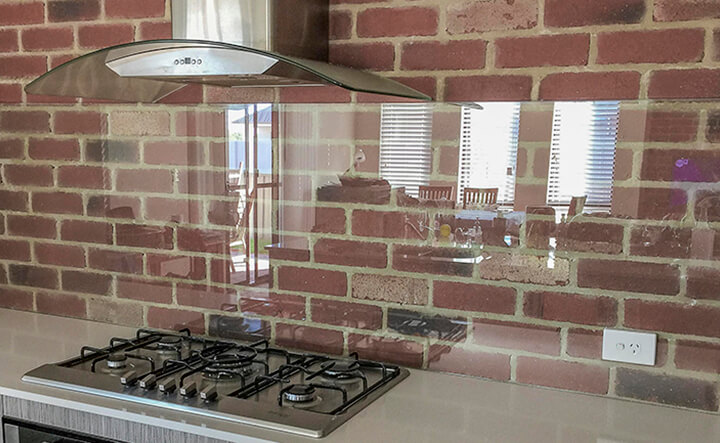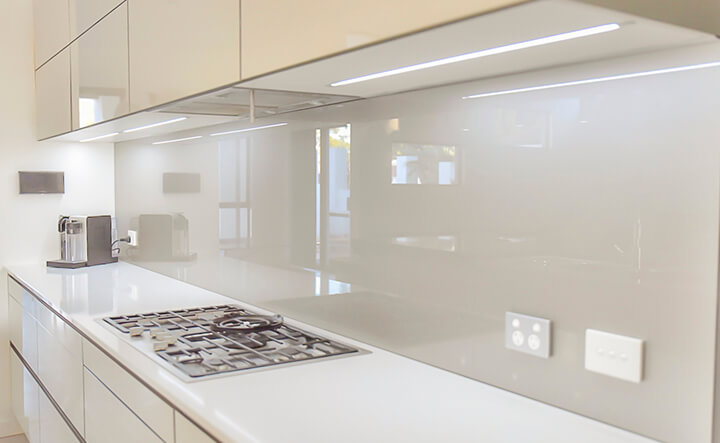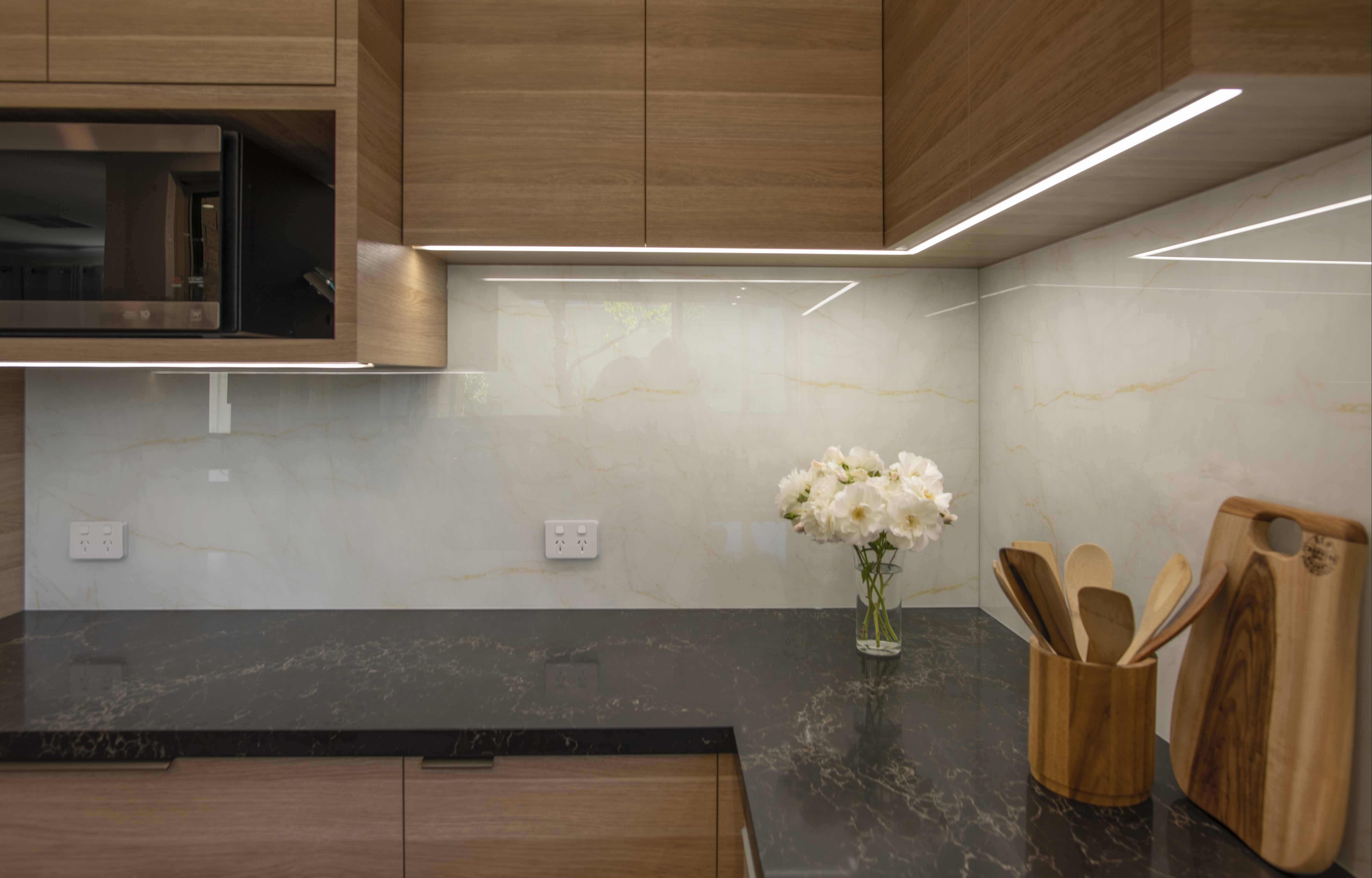
Kitchen splashbacks are a crucial element in any existing or new kitchen design. They serve both functional and aesthetic purposes, protecting the wall from splashes and spills while adding a touch of style to the space. But have you ever wondered about the optimal height for kitchen splashbacks?
In this comprehensive guide, we will explore everything you need to know about finding the perfect height for your kitchen splashbacks.
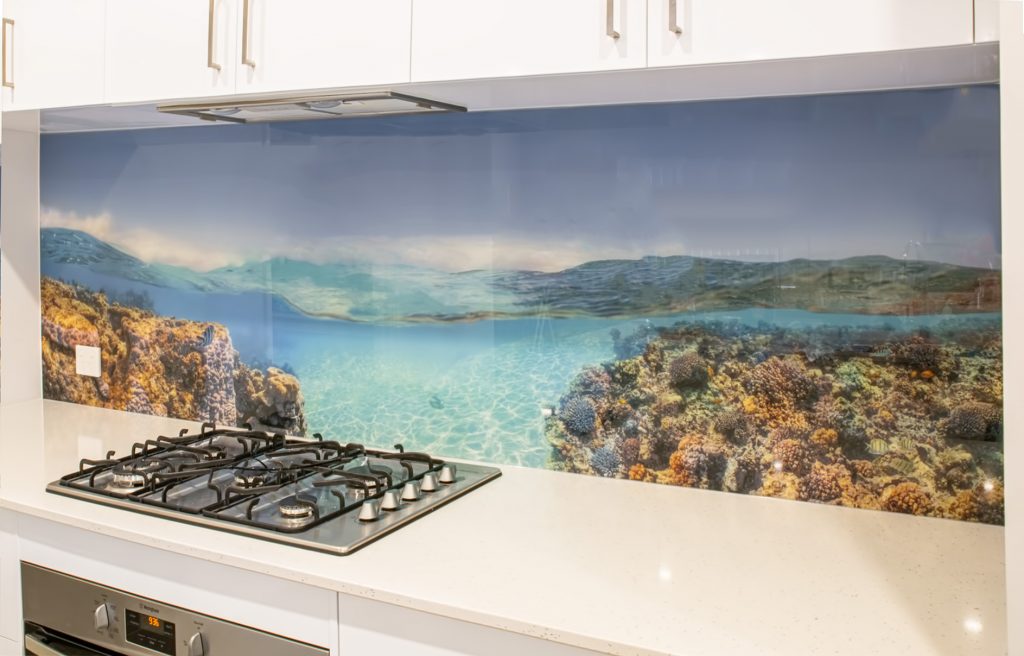
Factors Influencing Splashback Height
When it comes to designing your dream kitchen, there are several factors and key kitchen measurements to consider in order to determine the ideal height for your splashbacks. The height of your splashbacks can have a significant impact on the overall aesthetics and functionality of your kitchen.
Let’s explore some of the key factors that influence the height of kitchen splashbacks.
Kitchen Design and Layout
The design and layout of your kitchen play a crucial role in determining the height of your splashbacks.
For open-plan kitchens or kitchens with low ceilings and lower cabinets, a lower height may be preferred to maintain a seamless flow, maximize the perception of space and allows the splashback to fit underneath comfortably. This can create a harmonious and visually appealing environment. On the other hand, in kitchens with a high ceiling height, taller splashbacks can create a sense of grandeur and complement the overall design, making a bold statement.
Additionally, the layout of your kitchen can also influence the height of your splashbacks. If you have free standing ovens or an under bench oven, a dishwasher, wall cabinetry, a floor cabinet carcass, induction cooktops, a kitchen island bench, breakfast bars or countertop that extends beyond the main cooking area, you may require a custom splashback size for your kitchen.
The height of your floor cabinets may also affect what splashback height is required, depending on if they are of a custom height or the standard floor cabinet height.
Material of the Splashback
The type of material you choose for your kitchen splashbacks is another important factor to consider when determining the optimal height.
Different materials offer varying levels of durability, resistance to stains and heat resistance. The material of the splashback is also important, as you want to ensure your kitchen splashback matches the overall design of the kitchen, dining area and existing kitchen appliances.
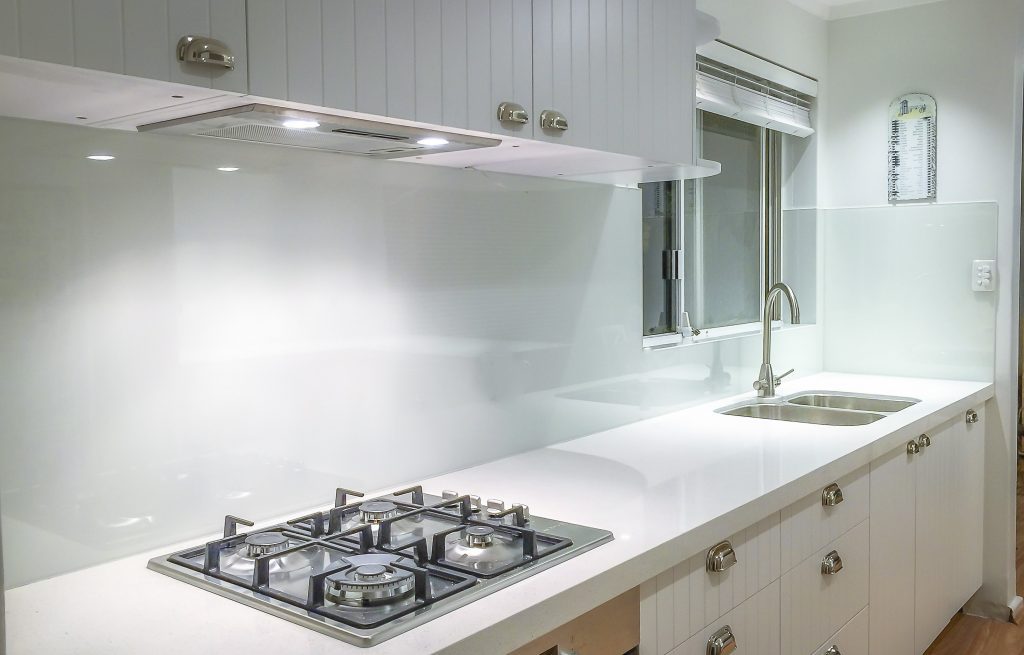
Glass Splashbacks
Glass splashbacks, for example, are known for their easy maintenance and cleaning properties, making them suitable for lower heights where splashes are more common. The smooth surface of glass makes it easy to wipe away any spills or splatters simply with a damp cloth, ensuring a hygienic and pristine kitchen environment. Another benefit of glass splashbacks is that they suit a range of kitchen designs, complimenting existing kitchen elements such as a stone benchtop, marble counters, white cabinets and more.
On the other hand, materials such as tiled or stainless steel splashbacks may require higher splashback heights to ensure complete protection from splashes and cooking spills.
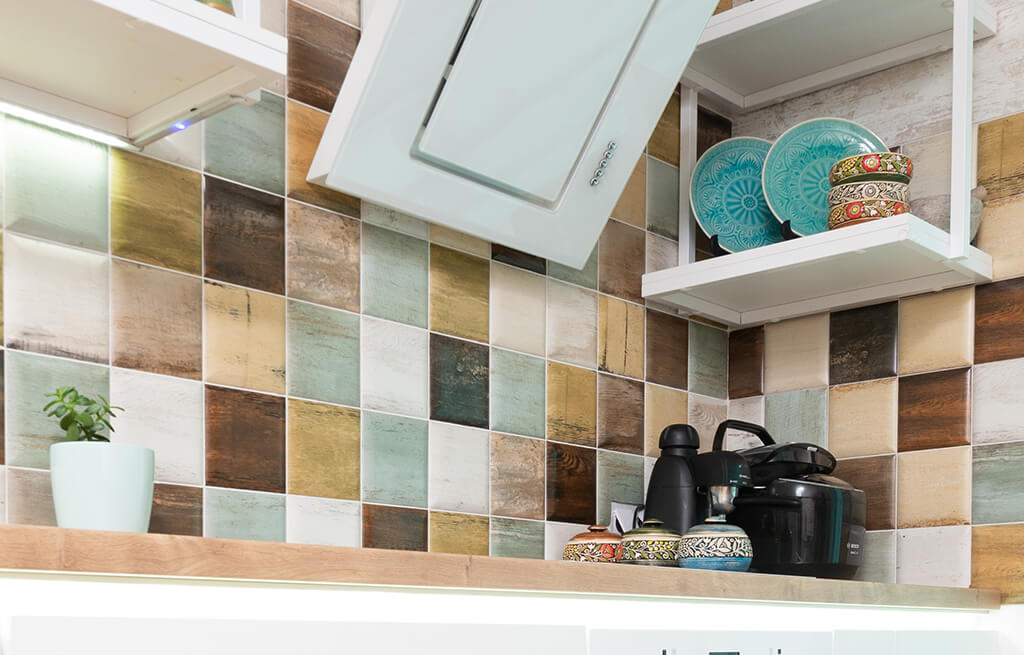
Tiled Splashbacks
Subway tiles and tiled splashbacks, while offering a wide range of design options, can be more challenging to clean and maintain. The grout lines between the tiles can accumulate dirt and grime over time, requiring more effort to keep them looking pristine.
Stainless Steel Splashbacks
Stainless steel splashbacks, while highly durable and resistant to heat, may show fingerprints and smudges more easily, necessitating a higher height to minimize their visibility.
User Height and Comfort
Consideration should also be given to the height of the primary users of the kitchen. The optimal height of the splashbacks should provide a comfortable and ergonomic experience for the individuals using the kitchen on a daily basis.
Higher Splashbacks
Taller users may prefer higher splashbacks to minimize the need for bending while performing various kitchen tasks. This can help prevent strain on the back and neck, promoting a more comfortable cooking experience.
Lower Splashbacks
On the other hand, shorter users may find lower splashbacks more convenient for cleaning and maintenance. With a lower height, it becomes easier to reach and clean the splashbacks without the need for step stools or excessive stretching. This can save time and effort, ensuring that the kitchen remains clean and hygienic at all times. It also means if your kitchen has upper cabinets, these can be placed slightly lower for easier access.
Determine The Optimal Height
The height of kitchen splashbacks is influenced by various factors, including the design and layout of the kitchen, the material of the splashbacks and the comfort of the users. By considering these factors, you can determine the optimal height that not only enhances the aesthetics of your kitchen but also provides a functional and practical solution for your cooking needs.
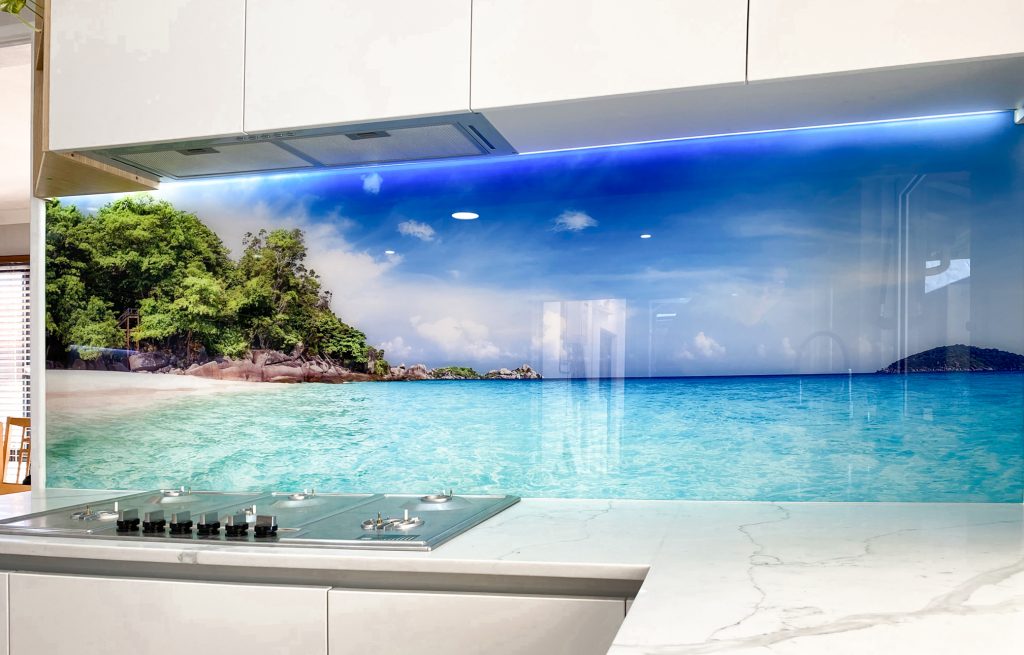
Standard Height for Kitchen Splashbacks
Industry Standards
When it comes to standard kitchen splashback height, the standard splashback height is 600mm and industry professionals and most manufacturers generally recommend the minimum splashback height be 450mm above the benchtop (this may vary depending on your benchtop height and benchtop thickness).
This minimum height allows for effective protection against splashes and stains while maintaining a visually pleasing balance within the overall kitchen design. If you have a wall unit over a sink, then a good rule of thumb is that there should be a minimum of 600mm between the sink and the bottom of the wall unit.
Pros and Cons of Standard Height
Opting for a standard height of splashback has its advantages and disadvantages.
On the positive side, it provides a safe and reliable option that works well for most kitchens. It is cost-effective, as standard-sized splashbacks are readily available. However, it may not cater to individual preferences or specific design requirements, such as having a range hood for a gas cooktop or wall cabinets, which may call for customization to ensure there is enough space for the splashback.
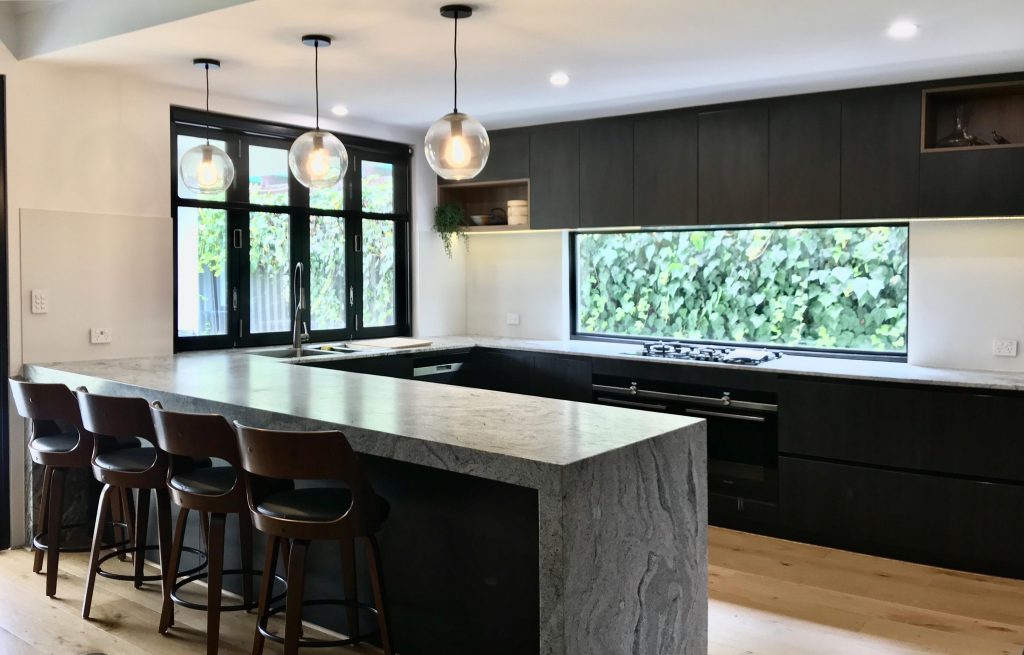
Customizing the Height of Your Kitchen Splashback
Assessing Your Needs
Customizing the height of your kitchen splashback allows you to cater to your unique needs and preferences. Consider your cooking habits, the likelihood of splashes, your cleaning routine, food preparation areas and the overall aesthetic you want to achieve inside your kitchen.
This assessment will guide you in determining the optimal height for your splashbacks.
Working with Professionals
When customizing the height, it is advisable to consult with professionals, such as kitchen designers, renovation experts. They have the knowledge and experience to guide you in making informed decisions. They can help you evaluate the factors influencing the height such as the height of the kitchen bench and recommend suitable options that align with your vision and budget.
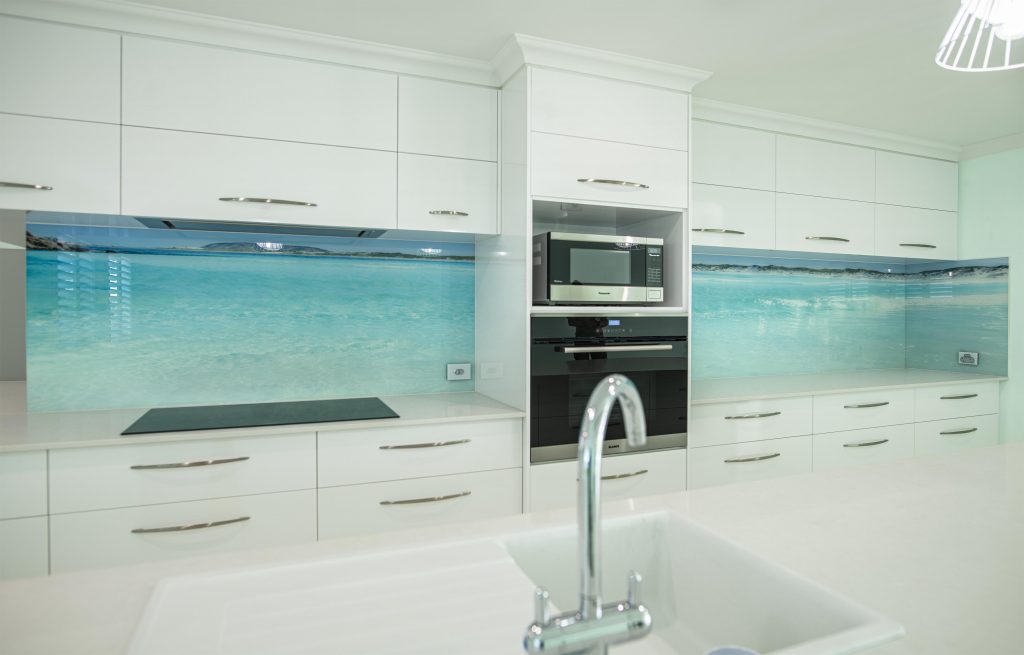
Maintenance and Cleaning Considerations
Impact of Height on Cleaning
The height of your kitchen splashback can significantly affect the ease of cleaning and maintenance. Lower splashbacks are more accessible for regular cleaning, making it easier to remove any grime or splatters. However, higher splashbacks may require additional tools or cleaning solutions to reach and maintain cleanliness.
Splashback Material and Maintenance
Another consideration is the material of your splashbacks and its maintenance requirements. Glass, for example, is relatively easy to clean with simple glass cleaners, making it suitable for lower heights that are more prone to splashes. Engineered stone splashbacks are also easy to keep clean.
Tiled splashbacks, on the other hand, may require more effort and specific cleaning solutions to ensure grout and tile integrity.
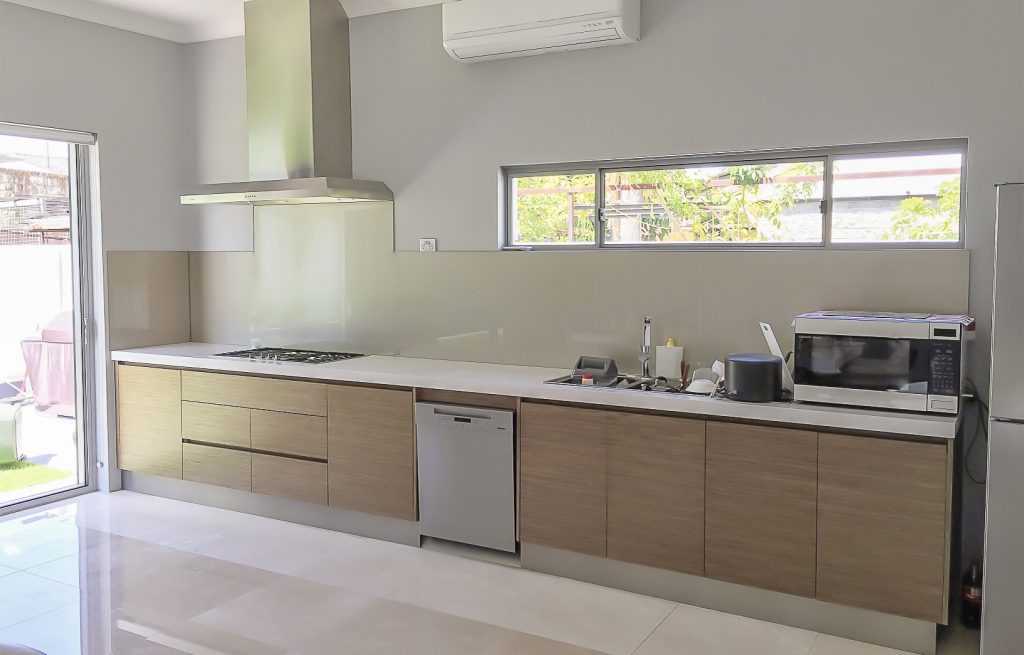
Find The Optimal Height For Your Kitchen Splashback
In conclusion, finding the optimal height for your kitchen splashbacks involves various factors such as kitchen design, user preferences and maintenance considerations. While industry standards provide a safe and reliable option, customization allows you to personalize the height of your splashback to suit your needs and achieve your desired kitchen aesthetic.
Consult with professionals and consider the materials used to ensure a functional, visually appealing, and easy-to-maintain kitchen splashback height that enhances your cooking experience.
Perth Splashbacks specialise in the manufacture, supply and install of high quality kitchen splashbacks, ensuring all work is completed to Australian standards. To find out more information regarding splashback heights or for a free quote and measure, contact our experienced team today.

